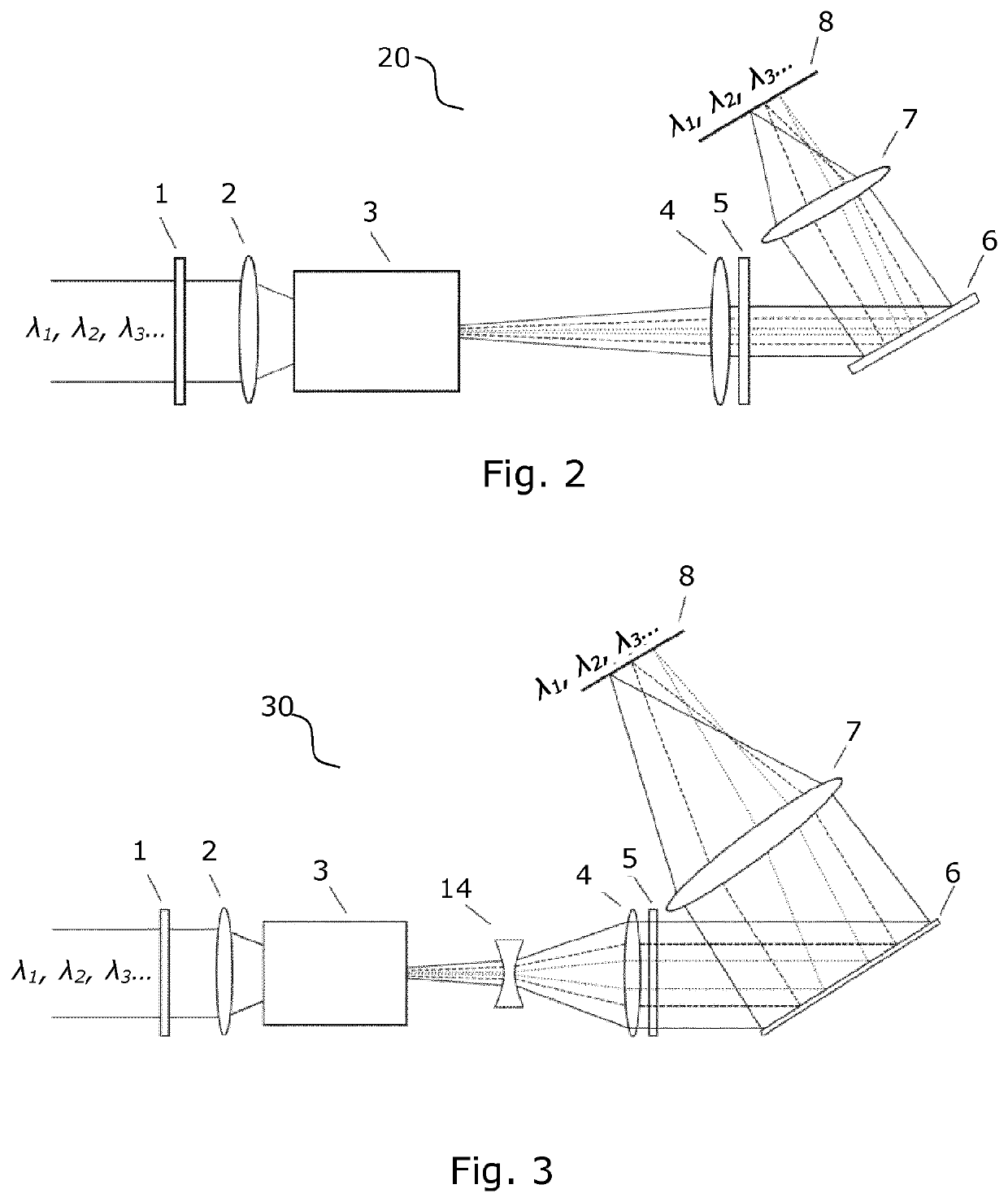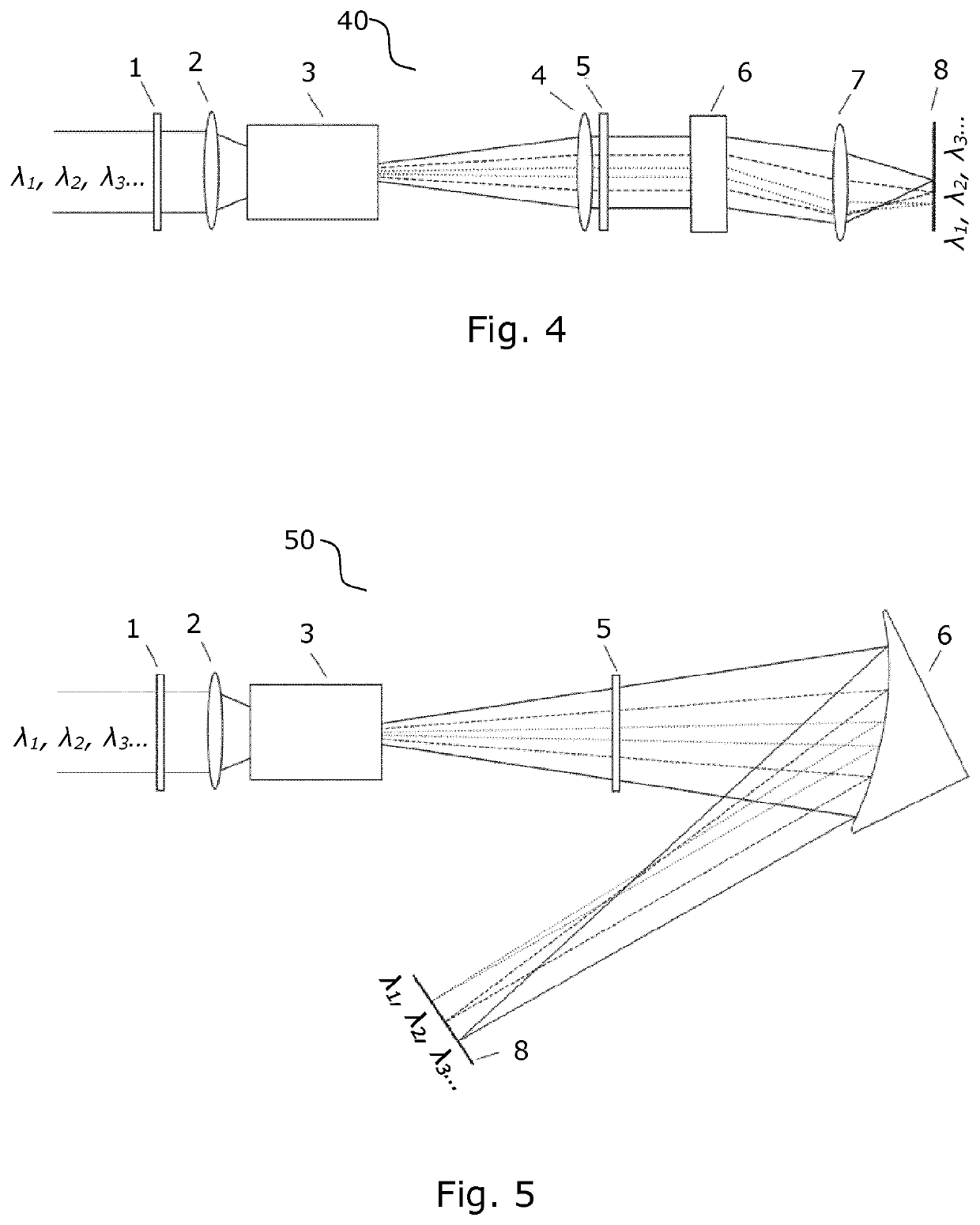Infrared upconversion spectrometer for the mid-IR range
a technology of infrared radiation and upconversion spectrometer, which is applied in the direction of optical radiation measurement, instruments, spectrometry/spectrophotometry/monochromator, etc., can solve the problems of inability to detect infrared radiation in the mid-ir range with low noise, high cost, and associated high cost, so as to achieve short spectrometer, reduce the effect of slit or aperture size and small virtual slit or apertur
- Summary
- Abstract
- Description
- Claims
- Application Information
AI Technical Summary
Benefits of technology
Problems solved by technology
Method used
Image
Examples
Embodiment Construction
[0075]FIG. 1A illustrates part of an embodiment 10 of the infrared upconversion spectrometer according to the invention used in the following for explanatory purposes. Here, solid and dashed lines represent different wavelengths λ1 and λ2 of received polychromatic infrared light, and are used to show and explain the different radiation paths for different wavelengths.
[0076]The first optical element for coupling the received infrared light 1 into the nonlinear material 3 is here embodied by a spherical lens 2. Preferred choices for the nonlinear material are various nonlinear crystal, such as periodically-poled Lithium Niobate (PP:LN), aperiodically-poled Lithium Niobate (AP:LN), AgGaS2, AgGaSe2, OP:GaAs, OP:GaN, BNA, and DAST. Inside the nonlinear material, the incoupled light is overlapped with a beam 9 (see FIG. 1B) from a laser 11 coupled in via mirror 12, and with proper orientation or poling of the nonlinear material, a nonlinear optical process such as sum frequency generation...
PUM
| Property | Measurement | Unit |
|---|---|---|
| aspect ratio | aaaaa | aaaaa |
| wavelength range | aaaaa | aaaaa |
| wavelengths | aaaaa | aaaaa |
Abstract
Description
Claims
Application Information
 Login to View More
Login to View More - R&D
- Intellectual Property
- Life Sciences
- Materials
- Tech Scout
- Unparalleled Data Quality
- Higher Quality Content
- 60% Fewer Hallucinations
Browse by: Latest US Patents, China's latest patents, Technical Efficacy Thesaurus, Application Domain, Technology Topic, Popular Technical Reports.
© 2025 PatSnap. All rights reserved.Legal|Privacy policy|Modern Slavery Act Transparency Statement|Sitemap|About US| Contact US: help@patsnap.com



